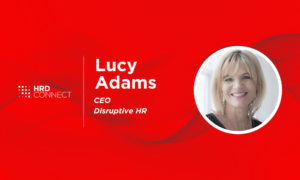Maximizing the full potential of a workforce
- 5 Min Read
An ongoing challenge for companies is employee engagement. How can HR professionals prioritise increasing the potential of their workforce to succeed in business goals?
- Author: Louron Pratt
- Date published: Sep 24, 2019
- Categories

Organisations are beginning to understand the benefits of maximising the full potential of their workforce. To succeed in this, companies must continually look for ways to rehaul their culture, values, and talent management strategies.
With insightful knowledge and experience from Carlene Jackson, CEO, Cloud9 Insight – one of Real Business Magazine’s Top 25 SME Culture Leaders in the UK, 2019 – HRD Connect examines what traits businesses can adopt to maximise the potential of their workforce.
Career progression
The definition of a career has changed drastically in recent years. It now defines who an individual is, and what they stand for. The traditional ‘lifelong career’ is no more. Research by Deloitte found that 43% envision leaving their jobs within two years, and only 28% are looking to stay beyond five years, meaning that employers often struggle with high staff retention rates. Therefore, businesses must understand these new working trends, and be flexible enough to offer their workforce multiple career options.
“We encourage everyone to have 10-year future CVs, which is a great way to encourage the team to look ahead and achieve more. If you have a career plan in place within a company, you are more likely to achieve it there,” says Carlene.
“Having a vision in the first place is so important, rather than simply drifting through life. This 10-year CV has been highly motivational, even for those who have been less ambitious.”
Company values
Company values can be an important aspect of the way a workforce performs, and how they act in turbulent times. If companies can create ethical values and maintain them, then the workplace will become a more respectful and conscious environment to work in. This would encourage everyone to bring their whole selves to work. In doing so, this could increase engagement and productivity.
“Values should be at the centre of every business. They are at front of mind in all that we do, especially when hiring new employees,” continues Carlene.
“We always try to attract candidates that will preserve and enhance our culture,”
“It’s important to create initiatives that celebrate company culture, so that these become shared stories which are cherished as the business grows.”
Implementing values could be the glue that unites companies to achieve success, and handle change well in times of uncertainty.
Employee empowerment and recognition
Staff recognition and empowerment are crucial among workforces today. Many businesses now manage employees from numerous generations and demographical backgrounds. Consequently, employee recognition and empowerment can make employees feel purposeful and involved within a diverse workforce. Research by Aon Assessments found that addressing reward & recognition was crucial in improving employee engagement.
“This year, ‘recognition for contributions’ was the key factor in putting rewards & recognition to the top, with ‘fair pay’ providing a supporting role,” said Ken Oehl, Global Culture & Engagement Practice Leader, Aon.
“People are emotional and fickle; they want to be won over. This is why employee engagement can be an organisations’ great differentiator in times of stability or rapid change.”
“I wish to empower the team and make each member feel valued and purposeful,” continues Carlene.
Celebrating success is also important, especially when it relates to the successful demonstration of company values and behaviours.
“As a wise friend once said to me, ‘Your kids are on loan to you’. I feel the same about the team; you can’t take for granted that everyone in the team will stay forever – if we add as much value as we can to their future ambition and success, we will have succeeded.”
Acknowledging career changes, recognisable successes, and personal landmarks can be key in improving productivity, and bettering the overall employee experience.
“If energy levels and personal motivation in the business are very high, it makes the role of a line manager easier, as the team are pushing to achieve their learning plans and aspirational career goals as well as other personal targets,” continues Carlene.
Attracting talent for the future
Aiding employees in their career aspirations, and considering internal promotions, are important in increasing the commitment and productivity of a workforce. If a company can upskill their current employees by hiring engaged workers who are keen to develop internally, then this could be the winning formula to maximising success in the coming years.
“I try to hire in anticipation of future business growth – not just at pain point of growth – as it’s not realistic to expect new team members to hit the ground running,” says Carlene.
“There is a learning curve of typically 3-6 months for full value to be gained. This hiring strategy results in more time for people to learn, and fewer fires to fight.”
Doing so can not only promote a positive learning culture, but can also reduce the cost of new hires.
“In a world of mental health and stress, it’s important to slow down and consider employees’ personal lives, and figure out how they measure personal success.”
“If we can exist to make a difference beyond pure commercial gain then the world will be a better place,” concludes Carlene.
Conscious organisations that invest time and resources into their workforce will undoubtably reap the benefits of having motivated, hard-working and diverse employees. If managed well, these engaged workforces will be determined to strive towards business goals, and secure the future of the company.










